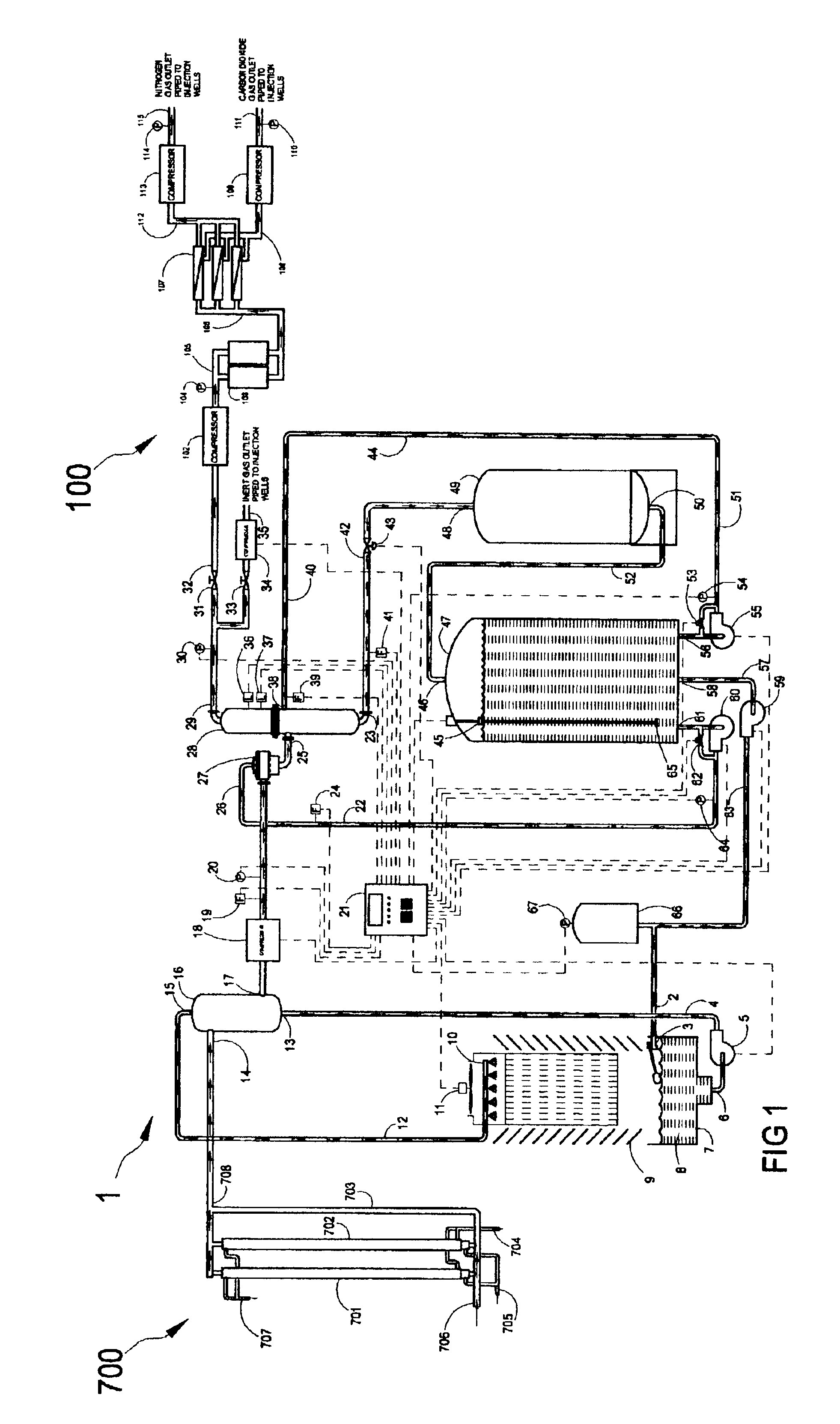Methods and apparatus for increasing and extending oil production from underground formations nearly depleted of natural gas drive
a technology of natural gas drive and underground formations, which is applied in the direction of liquid separation auxiliary apparatus, combination devices, feed/discharge of settling tanks, etc., can solve the problems of limited success, high pressure to form in oil and gas basins, and now mostly depleted fields
- Summary
- Abstract
- Description
- Claims
- Application Information
AI Technical Summary
Benefits of technology
Problems solved by technology
Method used
Image
Examples
second embodiment
FIGS. 33 and 34 depict in schematic illustrations flow diagrams of the pumping operation of the hydraulically operated crude oil pump 350 in accordance with the present invention. FIG. 33 provides a flow diagram of the hydraulically operated crude oil pump 350 with crude oil being expelled from the upper crude oil pumping section and crude oil being drawn from the underground formation into the lower crude oil pumping section. FIG. 34 provides a flow diagram of the pump with crude oil being expelled from the lower crude oil pumping section and crude oil being drawn from the underground formation into the upper crude oil pumping section. The hydraulically operated crude oil pump 350 consists of an upper crude oil pumping section, a double acting hydraulic cylinder section, a lower crude oil pumping section, and a hydraulic pump and controls driven by an electric motor. The upper crude oil pumping section consists of a bladder 421, an internal bladder space 420 for hydraulic fluid, a ...
third embodiment
FIG. 35 depicts a vertical cross-sectional view of the hydraulically operated crude oil pump 500 employing a diaphragm instead of a bladder as the crude oil pumping mechanism with a mechanical spring to return the diaphragm and draw the crude oil from the production formation in accordance with the present invention. The hydraulically operated crude oil pump 500 consists of a pump cap 503, and upper crude oil pumping section 502, a lower crude oil pumping section 501, a crude oil inlet 214 where crude oil enters the pump, a hydraulic pump and control valve assembly 213, and an electric motor adapter 212.
FIGS. 36-38 provide enlarged cross-sectional views of the various components of the hydraulically operated crude oil pump 500. FIG. 36 provides the cross-sectional views of the pump cap 503 and the upper crude oil pumping section 502. FIG. 37 provides the cross-sectional view of the lower crude oil pumping section 501. FIG. 38 provides cross-sectional views of the crude oil inlet 214...
PUM
| Property | Measurement | Unit |
|---|---|---|
| volume | aaaaa | aaaaa |
| volume | aaaaa | aaaaa |
| volume | aaaaa | aaaaa |
Abstract
Description
Claims
Application Information
 Login to View More
Login to View More - R&D
- Intellectual Property
- Life Sciences
- Materials
- Tech Scout
- Unparalleled Data Quality
- Higher Quality Content
- 60% Fewer Hallucinations
Browse by: Latest US Patents, China's latest patents, Technical Efficacy Thesaurus, Application Domain, Technology Topic, Popular Technical Reports.
© 2025 PatSnap. All rights reserved.Legal|Privacy policy|Modern Slavery Act Transparency Statement|Sitemap|About US| Contact US: help@patsnap.com



